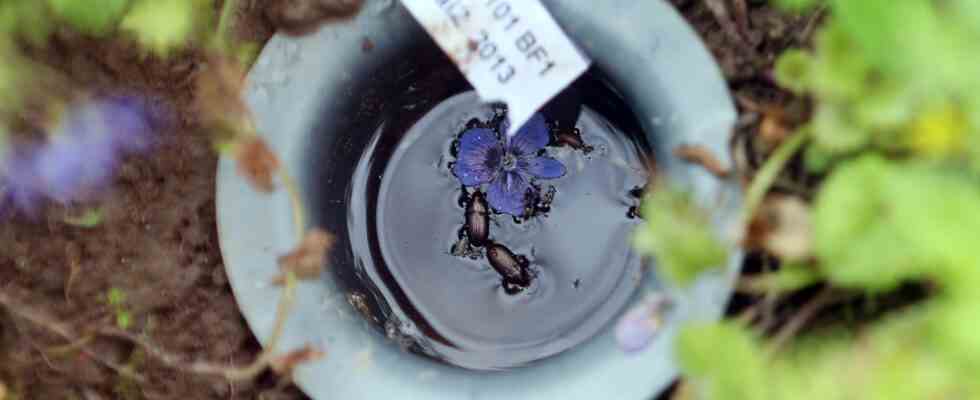As of: 06/29/2022 4:54 p.m
The diversity and abundance of insects is declining. But how exactly and what you can do about it is still being researched. Scientists in Brandenburg rely on cooperation with agriculture.
In Brandenburg’s sandy soil, Michael Glemnitz is trying to find out what beetles and mosquitoes like – and what they don’t. His workplace: a three by three kilometer open-air test laboratory near the small town of Paulinenaue. Here the doctor of agriculture conducts basic research.
First of all, this means that he and other scientists count insects on behalf of the Leibniz Institute for Agricultural Landscape Research. Ground beetle for example. “Glasses are buried in the ground, which are flush with the ground surface: the ground beetles fall in there,” explains Glemnitz. The logic is simple: if a lot of bugs fell in, the animals seem to run around a lot. And they only do that when they feel comfortable. A good habitat for beetles.
How many insects are normal?
Insect deaths have repeatedly made the headlines for a few years. In particular, since an insect protection association in Krefeld presented a large data analysis, the result: the insects are becoming fewer. Science was caught on the wrong foot, says Frank Eulenstein, project manager at the Leibniz Institute. “There were hardly any well-founded studies on this from the scientific side.” That is only just changing.
The federal government has provided 35 million euros in research funds for the FInAL program – “Promotion of insects in agricultural landscapes”.
A mammoth task for the scientists. On the one hand, they should find out what is particularly good for insects – and what is particularly harmful. On the other hand, there is still no reliable basis for how many beetles, mosquitoes and butterflies there should naturally be per square meter: “We don’t really know how many there are in the different habitats,” says Glemnitz.
FINAL is the first project in Germany that aims to create secure knowledge here. “We keep measuring with the same method in different places. First of all, this shows us what is normal in the landscape and under what circumstances,” says Glemnitz. In addition to Brandenburg, there are also research fields in Bavaria and Lower Saxony.
Pragmatic solutions required
The researchers are dependent on cooperation with local farmers. The goal: to interlock normal farm operations with insect protection. Both sides could learn from each other, sometimes it’s just about the little things. Many farmers do not like being told what to do from above.
Recently, Glemnitz says, there was a good example. The researchers wanted to create a hedge around a pond – a biotope for all kinds of insects. The farmer was against it – after all, nobody from the village would come to the pond to fish anymore. Solution: The hedge is coming but will be a few meters from the bank – local fishing enthusiasts will appreciate that – and so will the insects. “You have to take the special operational needs into account and not categorize them in general,” says project manager Eulenstein.
Flower strips as a start
The project has been running for four years and Glemnitz says he has already learned a lot. For example, that there are many farmers who are quite happy to get involved with nature. Especially since they then also benefit from the variety of insects. The ground beetle that the scientists collect in their jars, for example, is more of a friend of agriculture. It eats pests and weed seeds.
Glemnitz relies on long-term persuasion among the farmers – with small first steps: “The flower strip is the start. It’s easy to work with normal farm implements – and visually appealing.” He has more in mind in the long run. He hopes that the pilot project could become permanent scientific advice for all farmers. Of course always in mutual exchange.

